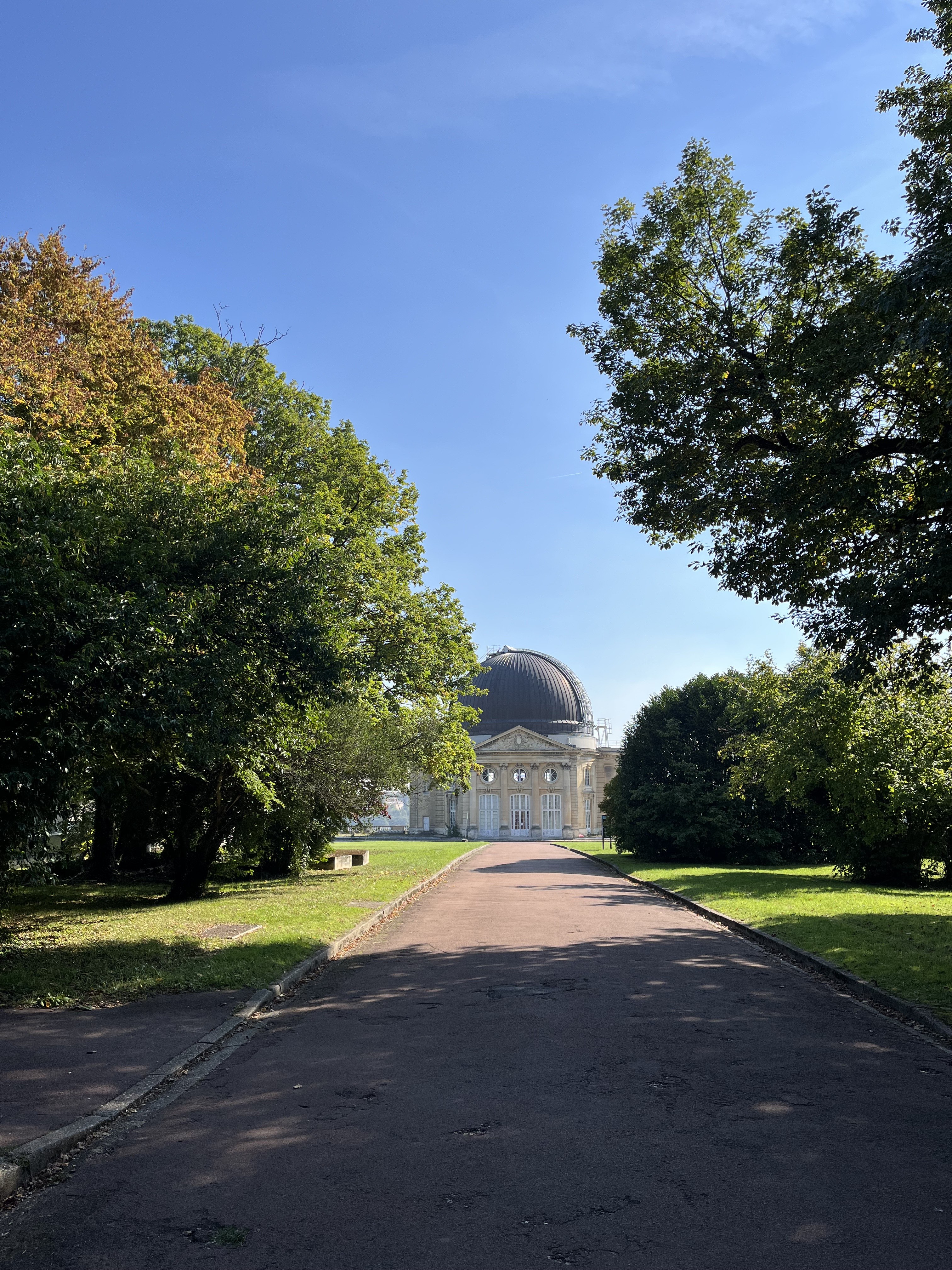Night-time campaign at Meudon Observatory combining instrument engineering (telescope and camera setup, calibration) with end-to-end Python pipelines for CCD imaging and spectroscopic data reduction and QA.

Lorem ipsum dolor sit amet, consectetur adipiscing elit. Suspendisse varius enim in eros elementum tristique.
Lorem ipsum dolor sit amet, consectetur adipiscing elit. Suspendisse varius enim in eros elementum tristique.
Lorem ipsum dolor sit amet, consectetur adipiscing elit. Suspendisse varius enim in eros elementum tristique.
Lorem ipsum dolor sit amet, consectetur adipiscing elit. Suspendisse varius enim in eros elementum tristique.
This project formed part of an advanced astrophysics unit focused on visible‑light observations and the end‑to‑end processing of scientific data. Nightly observing sessions (January–March, weather permitting) were conducted at the Meudon Observatory using 0.3–1.0 m class telescopes equipped with semi‑professional instruments. The principal objective was to acquire real observational experience and to master the complete workflow from planning measurements to producing calibrated data ready for scientific analysis.
Specifically, the project aimed to: (1) operate telescopes and instruments for imaging and spectroscopy, (2) implement standard calibration procedures for CCD and spectrograph data, and (3) develop reproducible Python pipelines to reduce and assess data quality.
I participated in observation planning (target selection, pointing, and scheduling) and in the night operations at Meudon. Instruments used included CCD cameras and a slit spectrograph; when available, speckle imaging setups were also explored. Practical tasks covered telescope pointing and celestial coordinates, focal and optical setup verification, and familiarization with instrument control software.
Observing campaigns were organized into multi‑night runs. For each target we recorded acquisition parameters (exposure times, filters, slit widths, binning), environmental metadata (seeing, airmass), and calibration frames (bias, darks, flats, arc lamps) required for robust reduction.
All reduction was performed in Python using standard scientific libraries. Key reduction steps implemented in reproducible scripts:
Output products were FITS files and analysis notebooks documenting each processing step, QA plots (histograms, PSF profiles, line profiles), and versioned Python scripts to ensure reproducibility.
Deliverables produced for the portfolio:
I contributed to designing the observing sequences, writing the reduction scripts, and producing the documentation and QA reports.
This project consolidated practical and methodological skills critical for observational astrophysics and instrumentation: telescope operation and pointing, CCD and spectrograph calibration, handling of FITS data, and development of reproducible Python pipelines (numpy, astropy, matplotlib and affiliated tools). I gained hands‑on experience in observational planning, night‑time operations, and diagnosing instrumental effects (bias, dark current, readout noise, PSF/seeing impacts).
The work demonstrates an ability to translate raw instrument outputs into scientifically usable data products, bridging instrumentation knowledge and software‑based data analysis — a valuable asset for ground‑based observing campaigns and space‑instrument validation alike.
Download the full project report for in-depth technical documentation and detailed findings.
![image of engineers working on satellite components [team]](https://cdn.prod.website-files.com/68b8a2f09cb5f6e554409260/68e10db4b534a5ce61403151_IMG_3817%202.jpeg)
![image of engineers working on satellite components [team]](https://cdn.prod.website-files.com/68b8a2f09cb5f6e554409260/68e10db48035418b571519ae_IMG_3810%202.jpeg)
![image of engineers working on satellite components [team]](https://cdn.prod.website-files.com/68b8a2f09cb5f6e554409260/68e10db42e09129c2c2212a5_IMG_3805%202.jpeg)
![image of engineers working on satellite components [team]](https://cdn.prod.website-files.com/68b8a2f09cb5f6e554409260/68e10db4c2e072fddf998d99_IMG_3808%202.jpeg)
![image of engineers working on satellite components [team]](https://cdn.prod.website-files.com/68b8a2f09cb5f6e554409260/68e10db51e2c71754cfcdd0c_IMG_3798%202.jpeg)
![image of engineers working on satellite components [team]](https://cdn.prod.website-files.com/68b8a2f09cb5f6e554409260/68e10e0fd3cf0d1a993515d0_IMG_2521.jpeg)